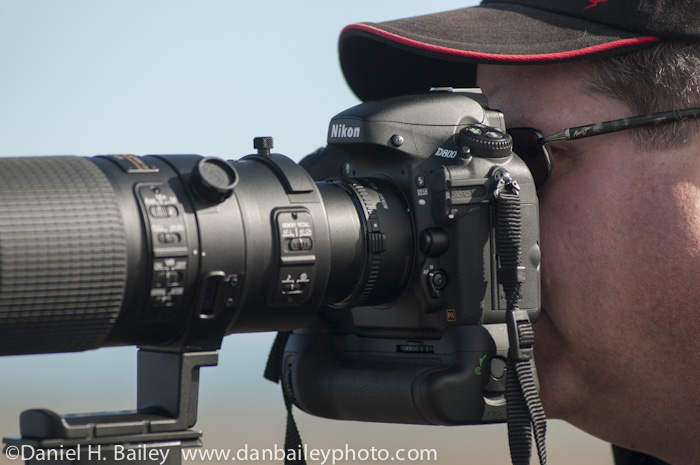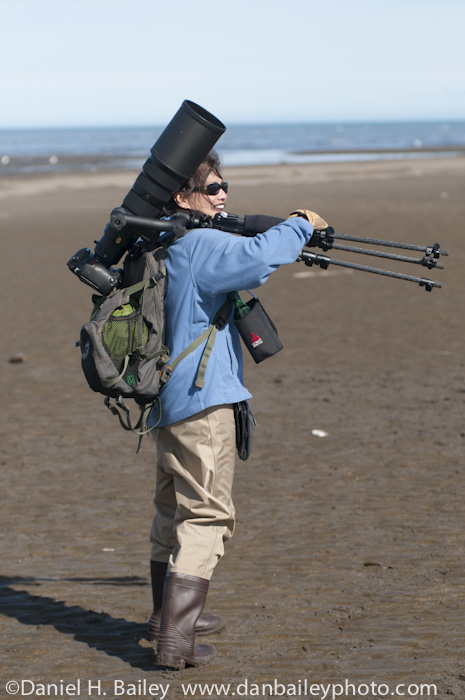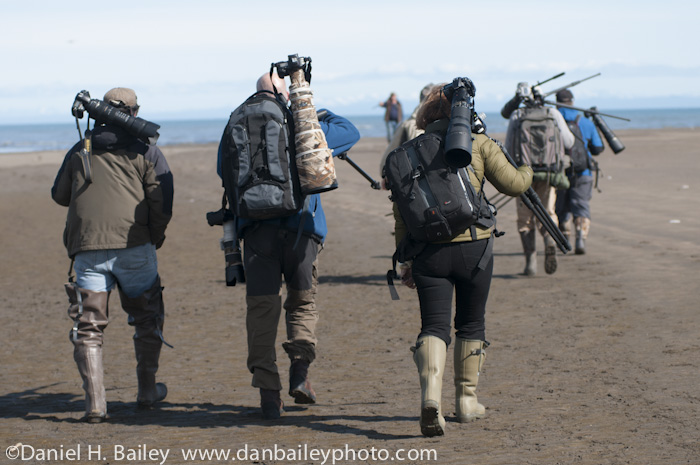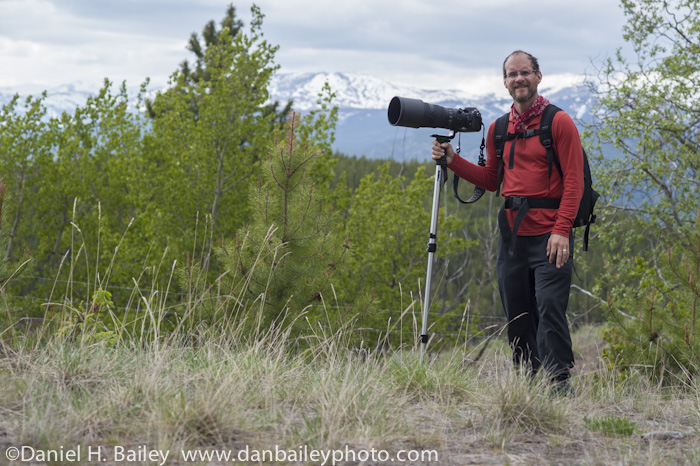Summertime in Alaska means the mass appearance of certain animal species that generally lay dormant in the wintertime. They can be extremely dangerous creatures, especially when you get too close, and thus in order to remain safe out in the wild, one should have a good understanding of their behaviors and migration habits.
Wildlife photographers are not necessarily elusive creatures. Although they often travel alone, they are known to travel in large packs, especially in regions where wildlife preserves, national parks and backcountry lodges are known to be close by.
 They also are known to possess the very latest of gear, which usually indicates that they are either 1. Professionals who are actually shooting for real publication, or (more commonly) 2. Retired doctors or lawyers with large disposable incomes.
They also are known to possess the very latest of gear, which usually indicates that they are either 1. Professionals who are actually shooting for real publication, or (more commonly) 2. Retired doctors or lawyers with large disposable incomes.
While other types of photographers are not as easy to spot on the run, wildlife photographers carry a typical set of markings that area easily identifiable, even from a distance. Most common is the extraordinarily large telephoto lens and the second set of three legs that are thinner, but longer than their primary pair.
 Since they are not creatures that tend to move quickly through the wilds, they tend to pack considerable more weight than others of their species. They often have a pronounced, and usually black hump on their back and smooth brown lower legs that help them navigate wet environments.
Since they are not creatures that tend to move quickly through the wilds, they tend to pack considerable more weight than others of their species. They often have a pronounced, and usually black hump on their back and smooth brown lower legs that help them navigate wet environments.
Some wildlife photographers encumber themselves with more equipment than they’re normally able to carry without considerable effort. This can utilize valuable bodily resources and energy.
Camouflage colored lens coverings are another common indicator. However, after it should be noted that these markings appears not to be an extremely effective.
In the past, this probably helped them hide better from the animals that they were photographing, but since many of them have evolved to wearing brightly colored jackets, scientists are no longer sure what part the camouflage plays now. Quite possibly it could be some sort of plumage that the males wear to try and attract prospective camera toting females of the species and intimidate the lesser males.
Dangers of the wildlife photographer: The first thing to remember is NEVER to get between a wildlife photographer and the animals that they’re photographing. I can’t even begin to emphasize the importance of this advice.
Try not to stand to close to a wildlife photographer and be careful when interacting verbally with them. Not all wildlife photographers are evolved with highly advanced social and communicative skills. Take great care when asking them about their gear, you may get more information than you bargained for. (See previous sentence.)
Under no circumstances should you try talk with them while they’re photographing. Listen for the fast “click-click-clicking” sound that they make; this will let you know that it’s not a safe time to talk.
Don’t worry about trying to take a picture of the same thing that they’re photographing, in fact, this kind of pack mentality is considered normal with wildlife photographers. Just try and blend in with the crowd if you can and you’ll be ok. This may even afford you the opportunity for more careful study of this strange creature, and if you can carefully slip unnoticed into the group, quite possibly a free meal at the lodge where they’re habitating.
I don’t pretend to be a scientific expert on this matter, so if you have any other knowledge and/or observations about wildlife photographers, please comment below so that we may all benefit from your insight.




You have a primary set of three legs? I think that only describes roughly half of the wildlife photographers, though in ego only. The actual number observed to be possessing a primary set of three legs is far greater than the number that think they do. Most attempt to make up for this shortcoming with ever bigger telephoto lenses. I’m assuming that’s the case with the “wildlife photographer” that paid $2M for the 1600mm Leica lens overseas.
W, you misread my post where I indicated the primary “pair” of legs. At any rate, you could be correct in the assumption that many photographers possess egos as big as their lenses. And I won’t even begin to speculate on the matter of equipment based compensation for any number of shortcomings. Hey wait… I have some pretty big lenses too! 😉 At any rate, thanks for reading! -D
[…] some “useful” information about photographers, especially wildlife photographers (https://danbaileyphoto.com/blog/behavior-and-migration-habits-of-the-wildlife-photographer/). Much the same could be said about photographers at a ballooning event except the lenses uses […]
[…] BBC News has Kodak set to quit camera film and photo paper business Photo Attorney has Copyright Office Requests Additional Comments and Announces Public Meetings on Remedies for Small Copyright Claims Dan Bailey has Behavior and Migration Habits of the Wildlife Photographer […]
[…] Wer in der Wildnis unterwegs ist, sollte mit dieser Spezies vertraut […]
[…] Wer in der Wildnis unterwegs ist, sollte mit dieser Spezies vertraut […]
Hi, great photo shoot. I like your setting. Thank you for sharing.
Brilliant, I’m on the floor in stitches reading this Dan..! And it’s all so true…!
I keep reading and rereading this article and just love it. Best part is about the camouflage lenscovers!
Excellent!
I have the big super-telephoto lens (a Nikon AF-S II 600mm f/4 D IF-ED, but I only have a monopod. Does this mean that I’m a slightly deficient species of wildlife photographer? ~evil grin~
[…] BBC News has Kodak set to quit camera film and photo paper business Photo Attorney has Copyright Office Requests Additional Comments and Announces Public Meetings on Remedies for Small Copyright Claims Dan Bailey has Behavior and Migration Habits of the Wildlife Photographer […]